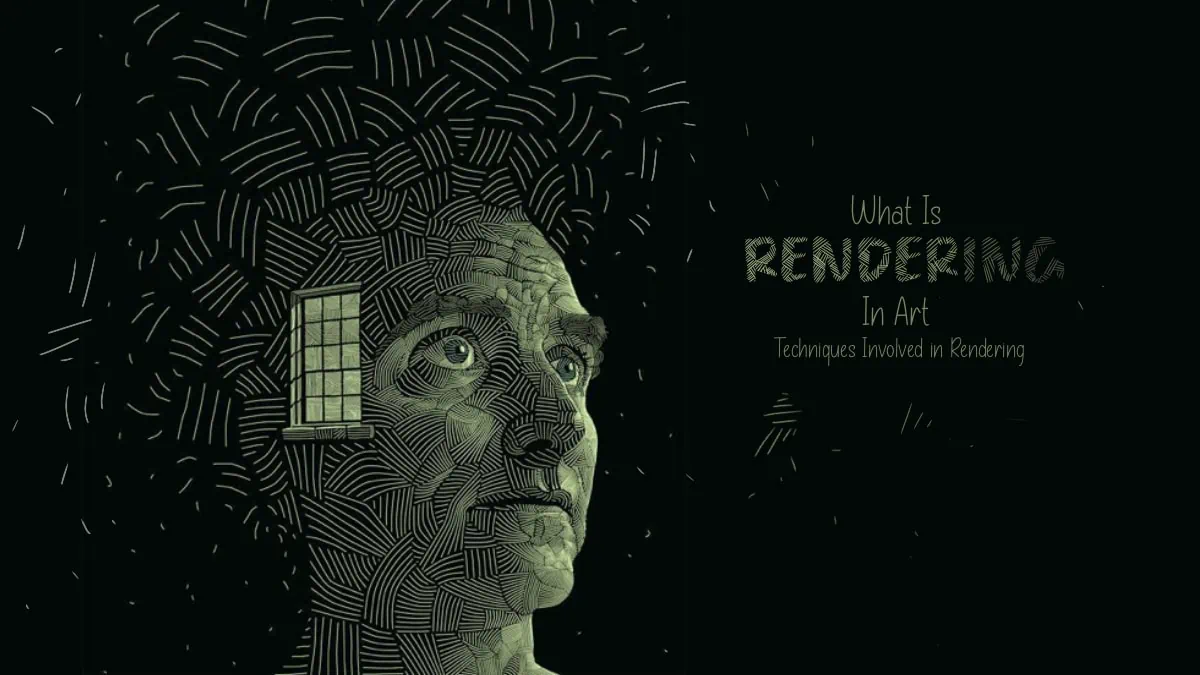Art always fascinates me.
I always wonder if paintings and 3D images are magical.
How can someone draw something that is so realistic from scratch?
Look at the art communities for once; they produce insanely detailed images that appear real and live.
How? Don’t you want to know?
Well, their little secret is not a secret anymore.
I succeeded in finding the reasons behind all the amazing paintings and sculptures that we witnessed today.
The two-word mystery name—rendering art!
Have you heard about this before?
If you’re an artist, you must have heard or read a little about it.
If you have never heard of it, no worries; I’ll help you understand what rendering art is.
Buckle up, as the ride will open many hidden treasures about how we get fascinated with the famous artwork!
Table of contents
What Does Rendering Mean in Art?

Have you heard people say, “Hit the render button and it’s done?”
Rendering in art is basically the process of creating an image from scratch to the final output.
It is defined by adding more and more details to the picture to make the piece look real and captivating.
The meaning may differ by more than one answer, depending on traditional vs. digital art.
In traditional terms, rendering in art means painting using lines, shapes, and colors (dark or light) or creating sculptures using clay to give a 3D appearance.
In digital art, rendering art refers to the act of finalizing a piece of art with the help of computer effects.
Summarizing the difference:
| Traditional Rendering | Digital Rendering | |
| 1. | Rendering with the help of lines, shapes and colors | Rendering with the help of computing effects in visual tools |
| 2. | Produce effects of shadow and light in the art | Produce realistic images in 3D models |
| 3. | It’s a handmade production that includes artworks and sculptures. | It’s computerized and includes 3D models |
| 4. | Mostly used by artists, painters, and sculptors. | Mostly used by graphic designers and architects. |
Now you know the difference between traditional rendering and digital rendering.
Rendering in art is not just restricted to paintings but is utilized throughout the industry.
Whether it is the designers explaining the product’s functioning or the building structure.
There are many styles of rendering that teach us how to render art.
Suggested read: Value in Art
How to Render Art: Styles and Mediums

You know what captivates you about watching art?
It’s style, the colors that give them a live appearance, the shadow that falls according to the setting of the light, and more.
There is a movement in art that catches your attention.
Rendering in drawing is to create an artistic approach and increase its quality by making it more aesthetically pleasing.
Rendering in Art with Traditional Medium
When you go for traditional rendering in art, there are an ocean of choices in medium.
- Graphite pencils, which are available in varieties. When you produce art through this medium, you’ll notice a dark and soft texture in art.
- A ballpoint pen generates a clear line, which allows for flow in a sketch. It is the most available medium for any artist to render art quickly.
- Watercolor is a flexible medium that can be used on wood, paper, cloth, or canvas. It produces a softer and more delicate rendering in art.
- Charcoal pencils are an ideal medium for making the art look smudge. If you like a deeper tone, then this is your medium. It is suitable for highlighting tiny details.
- Oil painting is another rendering in the art style that dries out gradually with the appearance of realistic artwork.
You know the best part? You can find all these mediums in one place!
Didn’t get me?
At PortraitFlip, we offer seven mediums and you get to choose your favorite one. You just have to send us the picture and watch how we render your amazing painting!
Apart from these mediums, there are three techniques of rendering.
a) Hatching
Hatching is a method of rendering drawings that are painted in a parallel line.
To understand better, take a look at this hatching art.
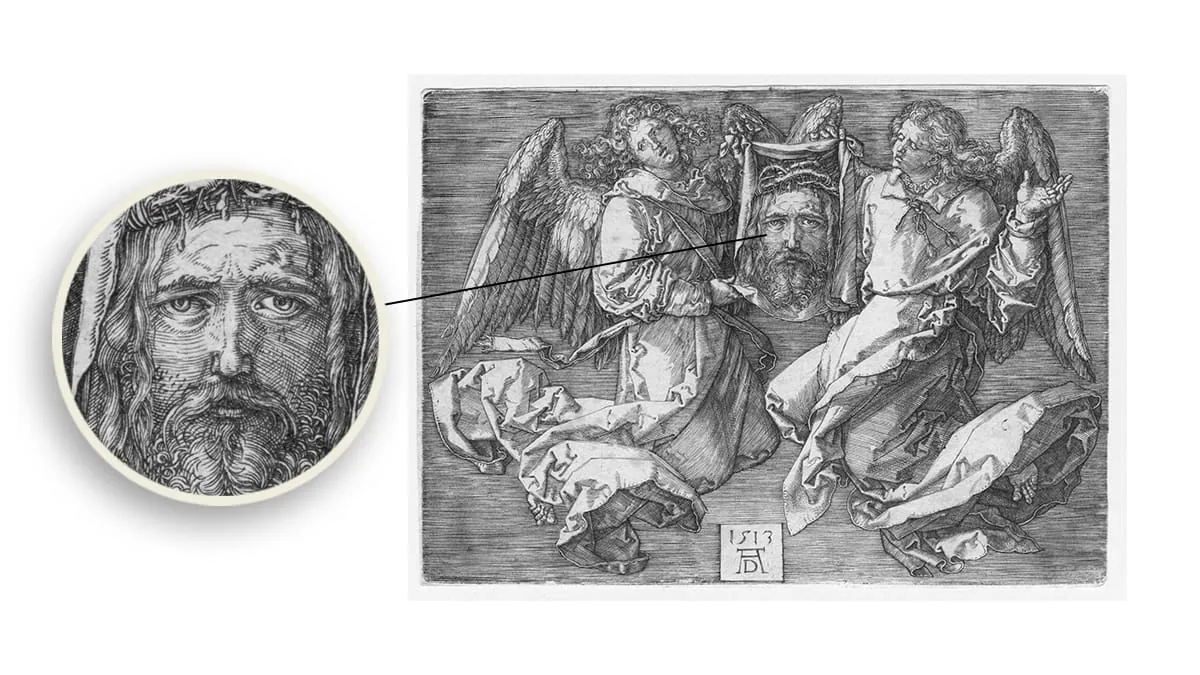
The lines are closely packed together, which forms a pattern and creates an image.
This rendering colorizes your picture and makes it look bright and dark at the same time.
It also helps you create shadows, which highlight other regions.
Cross-hatching is a technique that helps an artist place a hatch mark on top of the first hatch mark.
It produces a richer appearance.
Weave hatching is also a method that falls under hatching. It creates a view, just like the weaving process of any cloth.
It combines parallel marking with short sets of parallel lines in opposite directions.
This brings a beautiful touch to the rendering of art.
There are various types of hatching and cross-hatching techniques that you can look into.
b) Scribbling
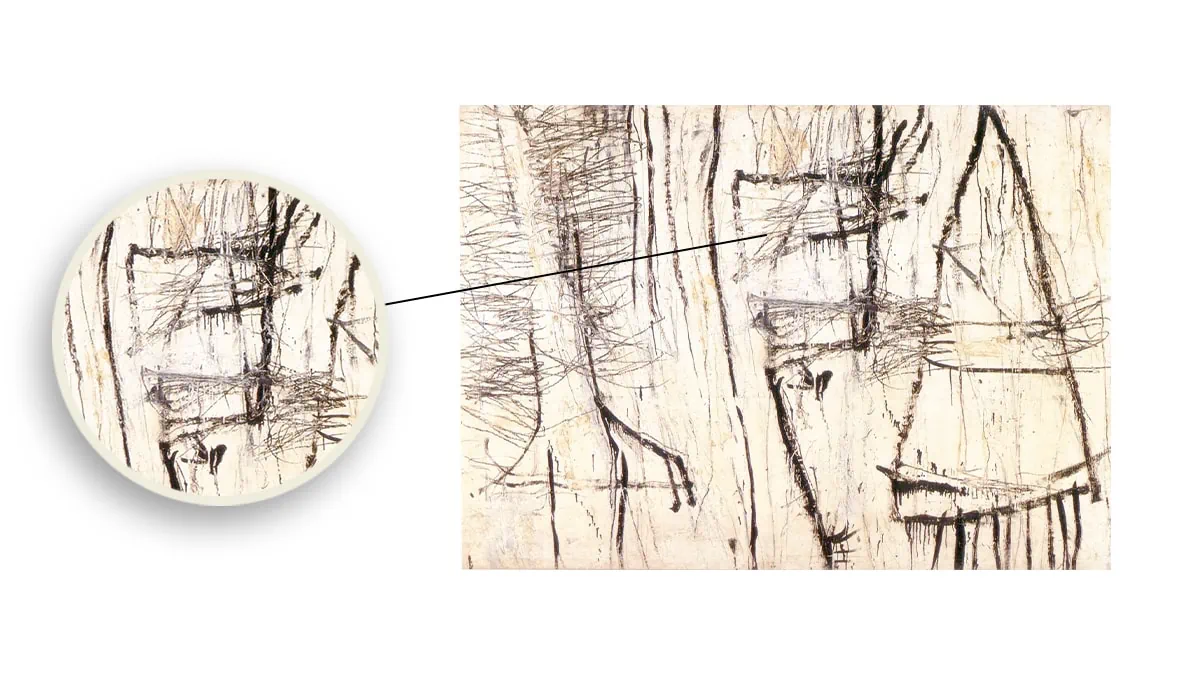
Scribbling!
Everyone’s childhood favorite play can be called a rendering in art technique.
I guess we are all artists now. Kidding!😛
Scribbling is a method where the artist represents a shade of drawing.
It provides depth and texture to the art.
Scribbling as an artist requires fast and unclear directions, which can be fun.
Don’t you think the above painting is identical to a familiar painting?
If you have witnessed paintings by Jackson Pollock, he uses the dripping method in his works.
That makes his artwork unique and captivates the viewers.
But scribbling and dripping seem a bit identical.
How?
Both depict abstract art; the theme is formed randomly and is not rendered neatly to the audience.
I guess Pollock has rendered his style!
Suggested read: 40 Famous Abstract Paintings
c) Stippling
Have you heard about pointillism?
Pointillism is an art movement that produces images by using small dots side by side.
The same goes for stippling rendering in art.
Artists produce innumerable small dots on paper, which create a picture when seen from a distance.
The dots eventually darken the subject and if you want to depict a lighter view, then use fewer dots with minute intervals between.
Stippling adds texture to the design and helps the viewer see the objects close enough.
To understand the technique, look at the famous artwork below.
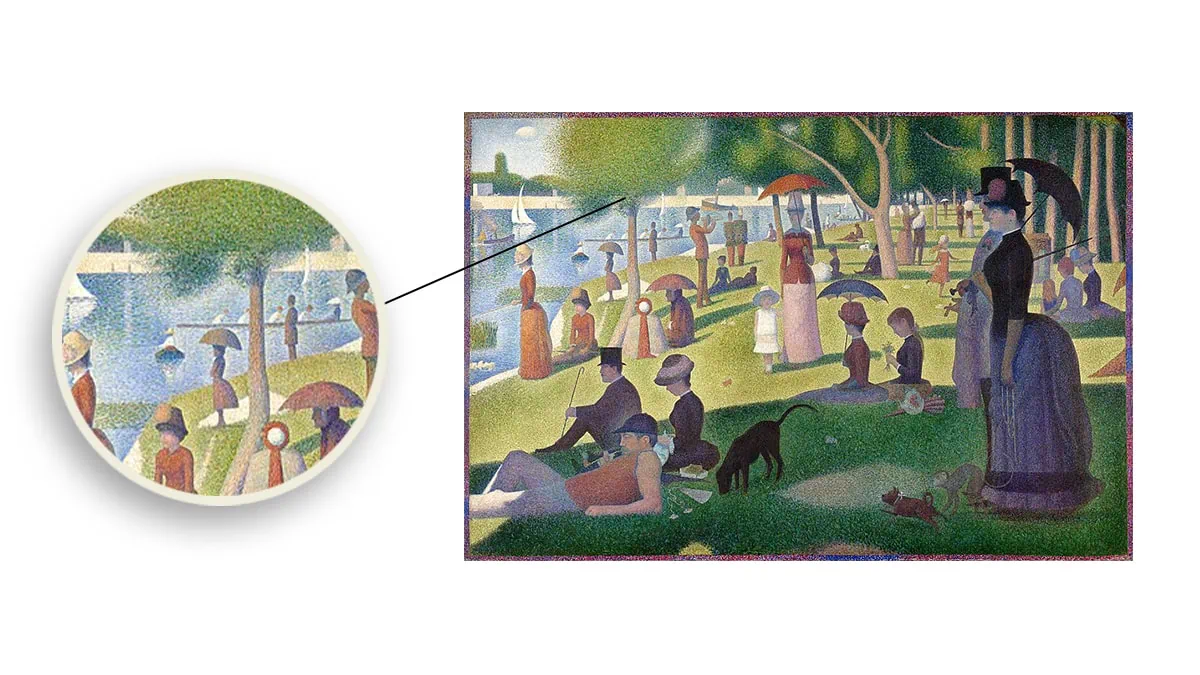
This is the most famous artwork that shows the strippling method.
If you give it a closer look, you’ll witness minute dots that eventually form an image when viewed together.
This rendering in art requires a lot of patience and keen observation.
Dots can do magic too!
Suggested read: What is Hyperrealism Art?
What is Rendering Art in Digital Style?
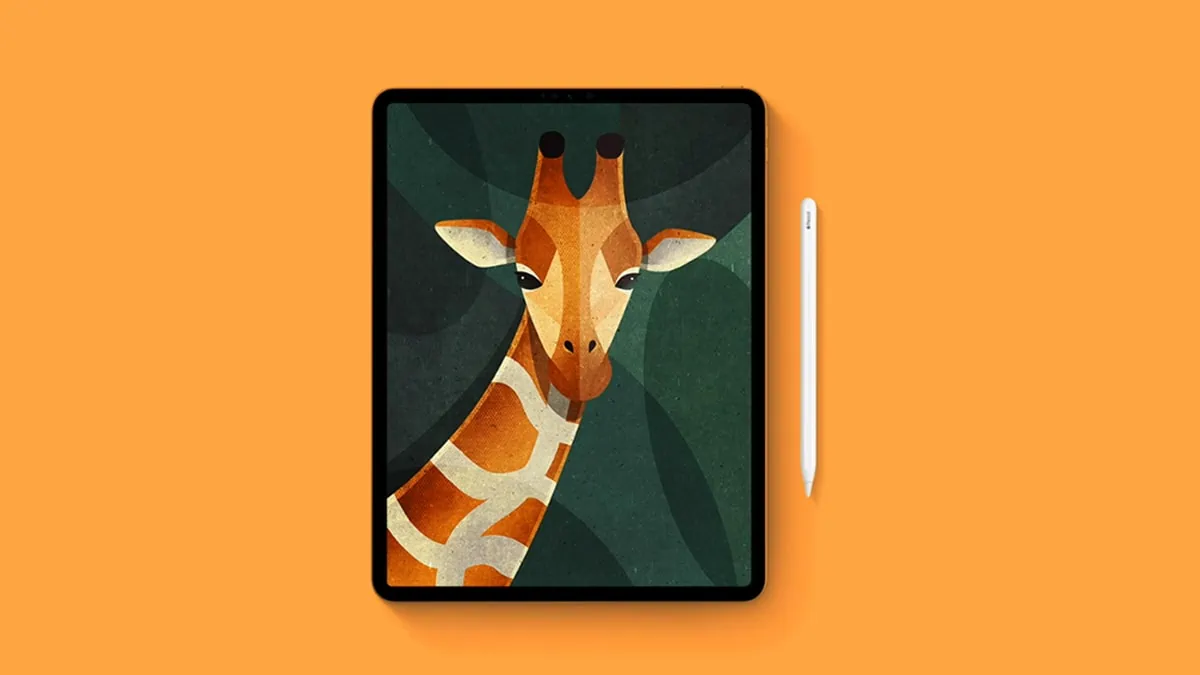
Rendering in digital art is a significant part of the entire process.
It comes with complexity and technicality that are usually avoided by many people.
Well, it is correct to say that, as it requires calculations and knowledge.
However, if you approach this style in the correct way, you can easily crack the most amazing technique to render art.
Millions of choices will be open in front of you.
If you ask what rendering is in digital art, the answer is the final procedure.
Once you complete the whole process, you need to click render, which will present you with the final output.
That is what rendering digital art means.
Rendering in art helps you take a glance at the final model and conclude the piece based on it.
Colors, tints, proportion in art, surfaces, and texture create a special effect on the image.
Furthermore, rendering involves both software-assisted methods as well as manual steps to finalize the piece.
Rendering in art is used by other people as well as artists.
For example, films, architecture, online games, or designs.
It also includes shading, scanning lines, or ray tracing.
Shading, Ray Tracing, and Scan Lines
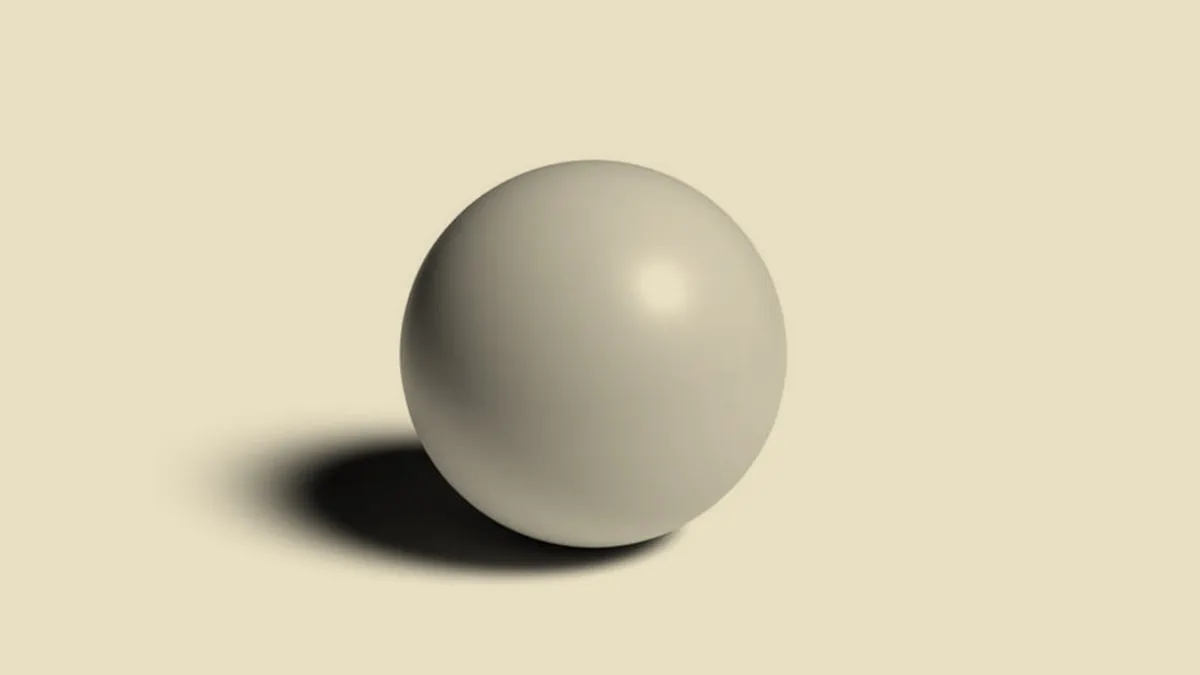
Shading is something that you are all aware of.
This technique helps in rendering brightness, color, or texture in different situations.
It allows light dispersion, refraction, blending sources, absorption, and so on.
Ray tracing is a rendering in art that simulates natural light by implementing an algorithm.
It creates virtual ray effects that look exactly like the actual light. Magical, isn’t it?
Scan lines allow you to produce an image instantly because of the computation, which is not pixel-based.
It doesn’t provide any dynamic lighting effects, as it may approach unrequired circumstances.
Lastly,
Digitally rendered includes different 3D rendering software consisting of tools that make artist tasks easy.
People who are not aware of this subject mostly get chaotic about rendering art definitions.
Once you understand what is rendered in art, you resolve half of your confusions.
From pencil drawings to digital works, rendering in art refers to how we finish our piece.
Now you also know the little secret about what makes an artwork captivating.
Hi Readers!
I hope you enjoyed reading about what renderings are and how to render drawings.
I have written my thoughts on this topic; now is your chance.
Share your views and write to me if there are any suggestions or queries via comments.
Exchanging thoughts will make us learn more about the topic.
I’ll definitely love to hear another perspective.
Till then, keep reading!
FAQs
The process of producing a piece from start to finish is known as rendering in art.
The example of rendering can be divided into two styles: traditional and digital. Traditional rendering includes paintings and sculptures, whereas digital rendering includes graphic designs.
No, rendering refers to the entire process of painting or creating a piece of art.
Rendering digital art is the final stage of producing a piece, image, or 3D model, or animation.
The term render derives from the graphic world, where rendering is an artist’s drawing of what a new structure would look like.

